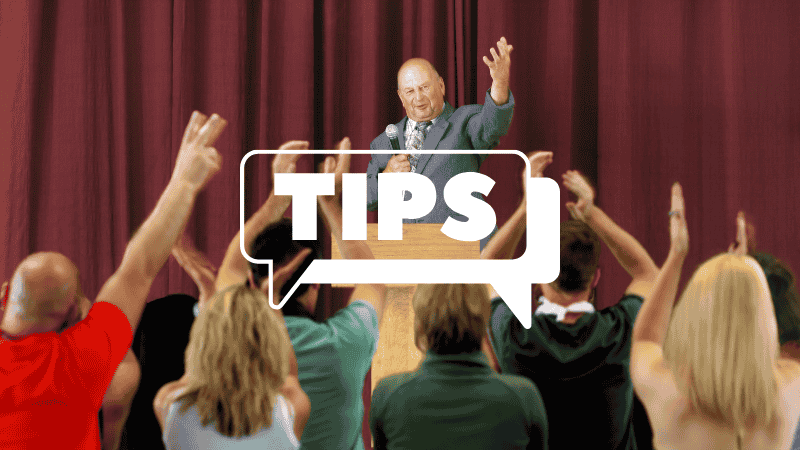Opening your speech effectively is the key to capturing your audience’s attention from the very first second. A strong introduction not only draws people in, but it also sets the stage for the entire talk, ensuring your message is delivered with maximum impact. By mastering how to open a speech, you’ll build a connection with your listeners, boost engagement, and enhance understanding.
Why a Strong Opening is Crucial?
The way you begin your speech can make or break your audience’s interest. A powerful opening ensures that your listeners are attentive, engaged, and ready to absorb the rest of your message. Here’s why it’s essential:
- Creates a Positive First Impression: The first moments of your speech determine whether your audience is hooked or tuning out. A captivating start leaves a lasting impression.
- Builds Speaker Credibility: A confident, well-structured opening shows that you’re knowledgeable and well-prepared, boosting your trustworthiness.
- Focuses Attention on the Topic: A good opening steers your audience’s attention to what matters most, ensuring they’re aligned with the message you’ll deliver.
- Enhances Information Retention: An engaging start increases the likelihood that your audience will remember your key points throughout the speech.
Powerful Techniques to Start Your Speech With Impact
Now that you know why your opening is so important, let’s dive into some techniques you can use to captivate your audience right from the beginning.
Start with a Story or Anecdote
One of the most powerful ways to draw people in is by telling a relevant story. Stories have a unique way of humanizing the speaker and making complex topics more relatable.
For example, if you’re giving a speech about leadership, you could begin with a personal anecdote about a leader who inspired you or a moment in your career that shaped your perspective.
Use an Inspiring Quote
Quotes can set a motivational tone and immediately engage your audience. A well-chosen quote not only adds credibility but can also make your audience reflect on its meaning.
You might use a timeless quote like, “The only way to do great work is to love what you do,” by Steve Jobs to inspire passion in a talk about pursuing your career dreams.
Ask a Rhetorical Question
Opening with a thought-provoking question encourages your audience to start thinking about your topic. A good rhetorical question gets people’s brains working and primes them for the ideas you’ll share.
For example, “Have you ever wondered what drives true innovation?” sets up a speech about creativity and breakthroughs.
Begin with a Surprising Statistic or Fact
People love surprising or unusual facts that challenge their understanding of the world. Starting with a statistic that’s unexpected or striking immediately catches attention.
For instance, “Did you know that over 80% of companies fail to make use of the data they collect?” could be a fascinating lead-in for a speech on the importance of data-driven decision-making.
Use Relevant Humor
Humor, when done correctly, can instantly ease tension and create a bond with your audience. A well-timed, light-hearted joke can break the ice and make you seem more approachable. However, always ensure the humor is relevant and respectful.
For example, “I once tried to give a speech without preparation… Let’s just say it was a memorable disaster!” can both engage and amuse your audience.
Greet Your Audience Warmly and Personally
Personal connection is key to any great speech. By directly addressing your audience and making them feel seen, you establish rapport and openness. A simple, “It’s wonderful to be here with all of you today” goes a long way in making people feel included.
Eye Contact and Confident Body Language
Your body language plays a massive role in how your audience perceives you. Standing tall with good posture, making eye contact, and using purposeful gestures help to convey confidence and connect with the audience. A well-placed smile can also make you more approachable and likable.
For example, start your speech with strong eye contact and an open stance, letting your audience know that you’re fully present and ready to engage with them.
Examples of Effective Speech Openings
Here are a few examples of different types of speech openings:
- Storytelling: “When I was 12, I decided to try and start my own business. Little did I know, it would teach me the most valuable lesson of my life.”Why it works: It creates a personal connection and primes the audience for a lesson about entrepreneurship.
- Quote: “As Winston Churchill once said, ‘Success is not final, failure is not fatal: It is the courage to continue that counts.'”Why it works: It establishes the tone of resilience and perseverance, fitting for a motivational speech.
- Rhetorical Question: “What if everything you believed about leadership was wrong?”Why it works: It sparks curiosity and immediately draws the audience into the topic of leadership.
Additional Tips for a Better Opening
To ensure your opening is as impactful as possible, consider these practical tips:
- Practice, Practice, Practice: The more you rehearse, the more confident you’ll feel when delivering your opening.
- Tailor Your Opening to the Audience and Context: Know who you’re speaking to and what matters to them. This will help you choose the best technique for the situation.
- Use Smooth Transitions: After your opening, lead seamlessly into the main content of your speech. A good transition ensures that the flow of ideas is natural and keeps the audience engaged.
Conclusion
Opening a speech in a way that grabs attention is an art that every speaker can master. By using techniques like storytelling, rhetorical questions, and relevant humor, you can make a lasting impression from the first words you speak. Remember to practice and tailor your approach to your audience for the most impact. A strong opening sets the tone for the rest of your speech, ensuring your message is both heard and remembered.
